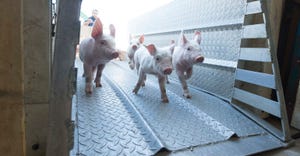African swine fever requires action during National Pork Month
Producers need to advocate for important funding in the 2023 Farm Bill and participate in the review of the swine traceability standards.
October 17, 2023

By Scott Hays, NPPC president and pork producer from Missouri
As we celebrate National Pork Month in October, we need to recognize the importance of protecting U.S. pigs from a foreign animal disease. According to an Iowa State University study, an African swine fever outbreak in this country could cost the U.S. pork industry more than $75 billion over 10 years. Other agricultural sectors also would suffer as feed grain use would decline and livestock employment would fall. Pork exports valued at $7.7 billion in 2022 would stop, forcing farmers out of business.
This topic is especially timely, given ongoing negotiations with the 2023 Farm Bill and proactive efforts underway by U.S. pork producers to strengthen the nation’s swine traceability standards.
It’s vital that lawmakers prioritize funding in the 2023 Farm Bill for prevention and preparedness efforts. Renewal and expansion of key farm bill programs will allow the USDA's Animal and Plant Health Inspection Service, state animal health officials and other stakeholders to deploy early detection, prevention and rapid-response tools should an outbreak occur. In addition, robust laboratory capacity will provide surveillance, and a viable stockpile of vaccines (for diseases which one is available) will support a rapid response.
The 2018 Farm Bill provided initial funding for these animal disease and management programs, and pig farmers are asking lawmakers to fully fund these necessary programs for the long term.
Effective FAD response also relies on the ability to know exactly where infected pigs are – and where they are not – should an outbreak occur. Traceability is required for a successful response. Approximately 1 million pigs are in transit every day and many cross state lines. Business continuity for the U.S. swine industry relies on our ability to contain a disease to a specific area, known as regionalization. This cannot be done without strong surveillance and traceability systems.
The U.S. pork industry is evaluating how movements of show pigs, breeding stock (sows and boar studs), and cull animals are tracked and is identifying opportunities for improvement. It’s another example of how pig farmers are stepping up to do the right thing.
As producers, we will continue to raise awareness about the threat of ASF to our farms and our nation’s food supply. We will continue to advocate for important funding in the 2023 Farm Bill and must also participate in the review of the swine traceability standards. All pork producers can comment on the draft traceability standards today on the website.
You May Also Like



